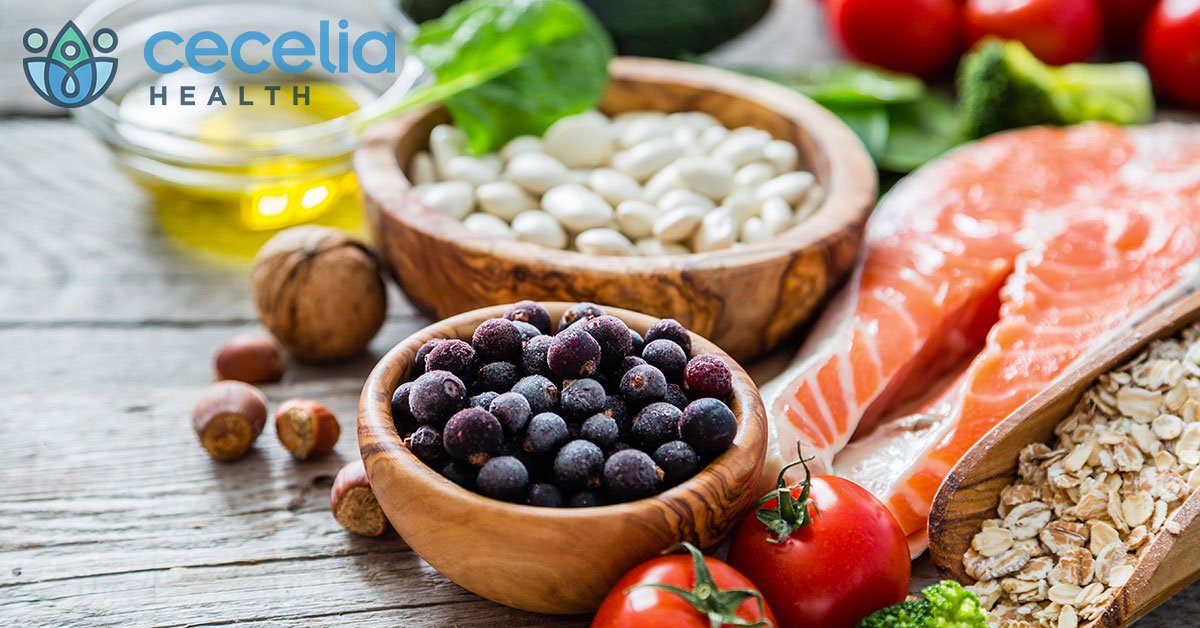Being identified with prediabetes or having a new diabetes diagnosis will require a deeper looking into current eating habits. People with diabetes know that food portions and mealtimes are crucially important for keeping blood sugar under control. A healthful diet may even have the power to stop prediabetes in its tracks. Regrettably, it is nearly impossible to find a “magic” list of foods, herbs, beverages or supplements that will directly lower blood sugar. Only exercise and medicine have a direct impact on blood glucose levels. However, it is important to understand how food choices play a pivotal role in managing blood sugar.
When it comes to food there are multiple pieces that influence the blood sugar puzzle. The type of food, how much is consumed and when it is eaten are all important. Measuring food habits overall instead of simply measuring food portions is essential. There are herbs, foods, spices and beverages that can work together to keep blood glucose levels low. Let’s look at a list of these foods and tips for incorporating them into a healthful eating routine:
1. Avocados – containing both monounsaturated and polyunsaturated fats, these nutrients may support improvements in insulin sensitivity. In addition, healthy fats may contribute to feelings of fullness and have a healthy impact on inflammation in the body.
Tips: Try an avocado plain with a few seasonings added. Use avocados to make a dip or even a creamy dessert. Spread on a sandwich or lettuce wrap.
2. Fish – another food high in good fats such as omega three fatty acids. Fish provides a good source of protein which has minimal effect on blood sugar levels and helps the body to stay fuller longer. Good sources of protein are important in combination with carbohydrate foods for regulating blood sugar levels.
Tips: Choose trout, albacore tuna, wild caught salmon or mackerel for a higher unsaturated fat content. Bake, broil or lightly pan fish fry with seasoning for a quick meal. Try fish in an open-faced sandwich, on a salad or with a side of rice and veggies.
3. Chia Seeds – rich in antioxidants and high in fiber, these tiny seeds help fight free radicals that wreak havoc in the body. As they expand when soaked, they provide more “bulk” in the diet to slowly digest foods and increase fullness.
Tips: Try chia seeds soaked overnight as a pudding. Add seeds to smoothies to lower the carbohydrate count. Combine chia seeds with oatmeal.
4. Berries – provide a sweet treat that may reduce temptation for foods that contain added sugar. In addition to natural sugar, berries have anthocyanins which aid in lowering blood sugar by increasing the production of insulin. The micronutrients in these fruits work together with other foods in a healthful diet to regulate digestive enzymes and more.
Tips: Add berries to water for flavor. Freeze berries in small portions to eat as a healthy treat. Add a handful of berries to a salad, smoothie or snack plate. Enjoy berries as dessert or as part of a healthy dessert recipe.
5. Cinnamon (Ceylon) – long used in ancient medicine, several compounds may help prevent sugar absorption in the blood stream. Regular consumption aids in minimizing spikes in glucose levels and may also improve insulin sensitivity.
Tips: Add cinnamon to tea or coffee for extra flavor or coffee. Incorporate cinnamon into warm or cold breakfast grains. Increase amounts of cinnamon required in recipes. Add cinnamon to smoothies.
6. Green Tea – one of the most nutritious beverages with catechins and powerful antioxidants to fight free radicals and help maintain blood glucose levels. Not to replace regular water consumption, green tea is great addition to help meet fluid daily fluid requirements.
Tips: Brew or steep green tea from loose leaves in gallon servings with boiling water and then store in the refrigerator. Add cinnamon, local-raw honey or berries to flavor green tea.
